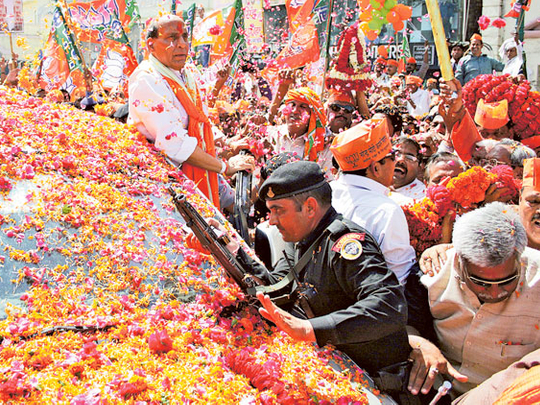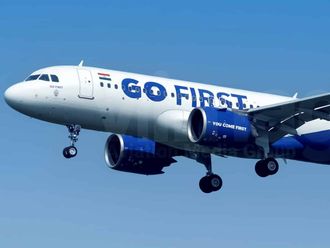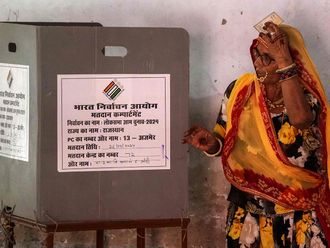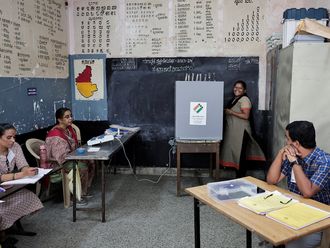
New Delhi: From the time Uttar Pradesh came into being, first as United Province on April 1, 1937 during the colonial British rule and then as Uttar Pradesh on January 26, 1950 to coincide with India becoming a Republic, all eyes turn to this northern state whenever general elections are held in the country.
If India is the world’s largest democracy due to the sheer size of its 1.2 billion population, of which 814.5 million are registered voters, Uttar Pradesh gets the same billing within India as it is home to nearly 200 million people and constitutes 16.4 per cent of India’s total voters.
This one state alone elects 80 members to the 543-member Lok Sabha while rest of the 27 states and seven Union Territories account for the remaining 463 seats.
The battle for the 80 seats has already started with voting on 10 seats of western parts of the state — communally surcharged after last year’s horrific communal riots — taking place on April 10. The remaining 70 seats will be decided in five phases on April 17 (11 seats), April 24 (12 seats), April 30 (14 seats), May 7 (15 seats) and May 12 (18 seats).
Out of seven potential prime ministers only four are contesting the ongoing polls and it is little surprise that all four in the fray are from Uttar Pradesh.
Two of them, the Bharatiya Janata Party’s prime ministerial candidate Narendra Modi and Aam Aadmi Party (AAP) chief Arvind Kejriwal, are contesting the Varanasi seat of eastern Uttar Pradesh that goes to the polls in the last of the nine-phase Indian general elections (Modi is also contesting the Vadodra seat of his home state Gujarat, which votes on April 30).
Of the other two the ruling Congress party’s vice-president Rahul Gandhi, who is the undeclared prime ministerial candidate of the ruling alliance, is contesting his family stronghold Amethi seat while the state’s ruling Samajwadi Party president Mulayam Singh Yadav, who is hopeful that the on-paper Third Front would come to power and he may lead it, is contesting Mainpuri and Azamgarh seats in central and eastern Uttar Pradesh respectively.
While it is not yet clear if and whether any particular party would sweep the polls in Uttar Pradesh, it is more or less certain that the next prime minister would once again be from the state.
Of the 13 prime ministers India has had so far, eight have belonged to Uttar Pradesh and together they have ruled India for all but 19 years. Of the five-non Uttar Pradesh prime ministers, incumbent premier Manmohan Singh (10 years) and P.V. Narasimha Rao (5 years) have remained in the chair the most while three of the rest Morarji Desai (Gujarat) remained prime minister for 2 years and 126 days, H.D. Deve Gowda (Karnataka) and Inder Kumar Gujral (Punjab) lasted in office for barely for 324 and 332 days respectively.
The eight prime ministers from Uttar Pradesh are Jawaharlal Nehru (16 years 286 days), Lal Bahadur Shastri (1 year 216 days), Indira Gandhi (11 years 59 days and 4 years 291 days), Chaudhary Charan Singh (170 days), Rajiv Gandhi (5 years 32 says), Vishwanath Pratap Singh (343 days), Chandra Shekhar (223 days) and Atal Bihari Vajpayee (16 days and 6 years, 64 days).
It would be interesting to observe whether the Gujarat chief minister Narendra Modi would like to go down in the history books as the ninth prime minister from Uttar Pradesh or the second prime minister after Desai from Gujarat. This depends on if Modi wins both Varanasi and Vadodra seats and whether he does become the next prime minister, which barring the unexpected appears a real possibility at this stage.












